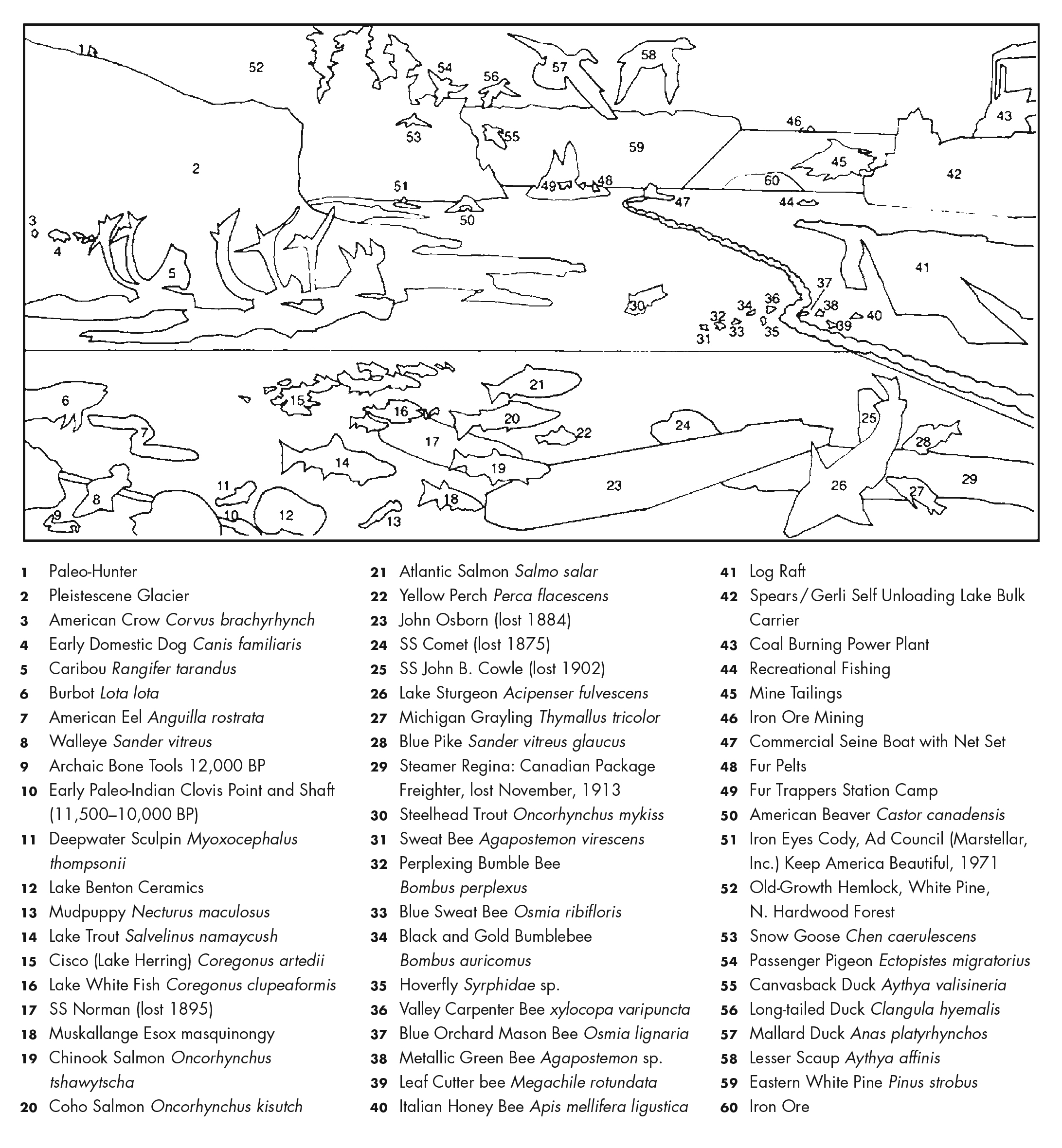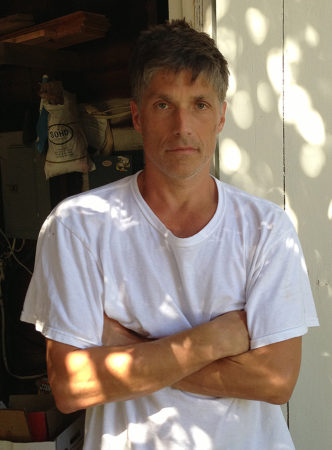Alexis Rockman was one of the first contemporary American artists to address climate change in his work – and remains one of the most profound. In 1999, he created Manifest Destiny, a 24-foot long oil painting exploring “how the Brooklyn waterfront will look after the glaciers melt.” Now in the Smithsonian Museum of American Art, the piece was Rockman’s first “natural history psychedelia;” his 2018 “psychedelia” examines the impact of climate change and other ecological stresses on the Great Lakes.
Rockman also created Weather Paintings depicting extreme weather caused, or exacerbated, by climate change; Field Drawings of regional biodiversity made from local soil; and Bioluminescence paintings of real and imaginary sea creatures he sketched for Ang Lee’s film, The Life of Pi.

Alexis Rockman, Manifest Destiny (2004). Oil and acrylic on wood. Dimensions: 96” x 288”. Collection: Smithsonian American Art Museum, purchase through the Luisita L. and Franz H. Denghausen Endowment, 2011.36A-D. © 2004, Alexis Rockman. Courtesy of the artist.
Artist’s Statement
I never start off with an idea of what I want a work to look like. I start like a journalist: I ask questions, and figure out what is the interesting thing going on.
I go to see things firsthand. I make field notes – little thumbnail diagrams with arrows and words. Later, in my studio, I study how scientists have shown this subject in the past – and I talk to the experts.
I combine natural history with lyricism to create a hybrid language – a “natural history psychedelia.” I want my work to attract and to disturb, to be almost impossible to look at and impossible not to look at, to create momentum for change.
Manifest Destiny projects what scientists told me could happen as a result of climate change: Brooklyn is in ruins. The relics of humanity are on the bottom of the East River. The Brooklyn Bridge is rusted away. I’m glad I won’t be around.

Alexis Rockman, Cascade (2015). Oil and alkyd on wood panel. Dimensions: 72” x 144”. Commissioned by Grand Rapids Art Museum with funds provided by Peter Wege, Jim and Mary Nelson, John and Muriel Halick, Mary B. Loupee, Karl and Patricia Betz, and general accessions funds. Collection: Grand Rapids Art Museum, 2015.19. © 2015, Alexis Rockman. Courtesy of the artist.
The Great Lakes Cycle aims to raise questions. The lakes contain 20% of Earth’s – and 95% of the U.S.’s – surface freshwater. So they are ‘ground zero’ for the future when freshwater will be Earth’s most valuable asset. Yet they are neglected, exploited, and further stressed by climate change. Can we face the reality of our actions and the consequences of complacency?

Artist’s Key to the species and objects portrayed in his Cascade painting (above). © 2015, Alexis Rockman. Courtesy of the artist.
Artist’s website: http://alexisrockman.net/
Read More:
Celebrate Earth Day
Alaskan Journey Exhibition Opens As State’s Temperature Soars

